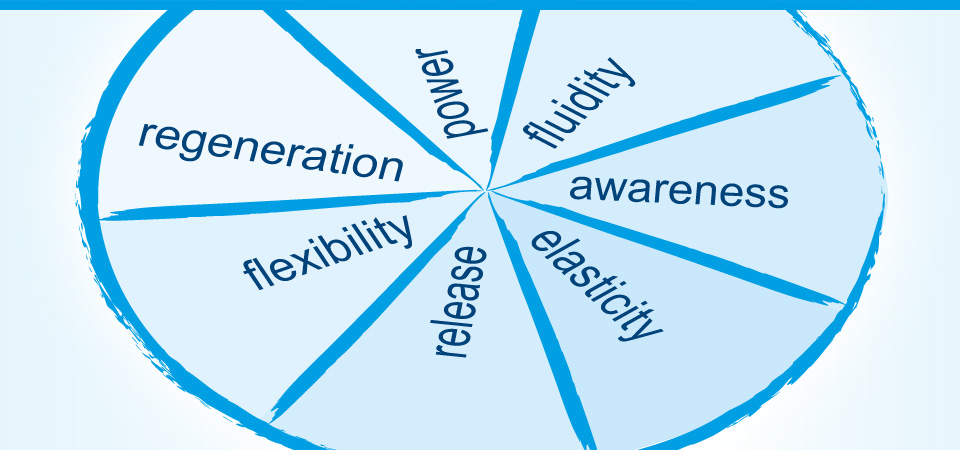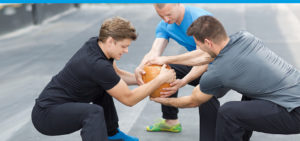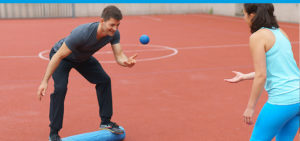
• Body structures require flexibility for free movement and alignment.
• Elasticity gives ligaments and tendons more tensile and restoring force.
• Loose connective tissue ensures the supply of the organism through fluidity.
• Functional muscle development requires power in the transmission pathways.
• Physical permeability is achieved by releasing blockages.
• Cells need periods of regeneration for optimum functionality.
• Information processing and transmission is stimulated by awareness.

The topic of “stretching” has been discussed back and forth a lot in recent decades. With the new fascia knowledge, the various stretching options have become explainable. It’s all about who wants to achieve which goal at which time. In other words, you adapt your stretching behavior to the activity that you want to perform or have already performed in the short or long term. According to current knowledge, for example, bobbing stretches in the end-degree area can be useful before high-speed strength movements, and releasing long-stretching stretches afterwards. General fascial stretching fundamentally extends the range of movement. Different directions and forms of stretching loosen adhesions in the fascia and balance the body areas. This in turn leads to free mobility. Previously restricted functionality can be restored or prevented in advance.

This type of exercise energizes the body. It is able to stretch and center itself again – it remains elastic. This is important for speed and responsiveness and shapes a firm body silhouette. Elasticity includes the catapult effect. Energy is charged through a preparatory counter-movement, which is then released again explosively, as in throwing, for example. The more the fascial pathways are involved, the more energy can be stored and released again. In addition to external movements, processes within the body such as breathing, heartbeat, sighing, blowing, speaking, singing, etc. also function via the catapult effect.

A well-functioning fascial network requires freedom of movement. Flowing movements with a wide radius create the greatest possible suppleness and gently release movement restrictions. This also requires a balanced environment in the fascial matrix to ensure that all body components can move in relation to each other. The resulting fluidity enables mobility between all fascial regions (muscles, bones, ligaments, tendons and organs). The result is a functionality of the body that is suitable for everyday use. Overall, movement competence is enhanced and movement sequences are harmonized. This improves physical health, fall safety and a vital appearance.

Muskeltätigkeit ist der Anzünder für Bewegung, gleichzeitig stabilisiert sich das fasziale Netz durch Muskelaufbau. Muskeln sortieren sich in langen Fazienleitbahnen durch den Körper. So werden kreuz und quer durch den Körper Kraftübertragungswege gebildet, die direkt auf- und miteinander reagieren und sich effektiv Unterstützung bieten. Das passiert vielfach und höchst komplex und macht aus jeder Bewegung und Haltung eine Ganzkörperaufgabe. Deshalb unterstützt ein Krafttraining, welches die Leitbahnenverläufe in die Bewegungen einbezieht, die Gesamtleistungsfähigkeit des Menschen. Einige Abschnitte sind besonders eng in ihrer Kraftübertragung miteinander gekoppelt, das sind die faszialen Hauptleitbahnen. Für die Stabilität sind besonders die Muskeln von großer Bedeutung, die in der faszialen Zentralleitbahn eingebettet sind. Sie bieten Bewegung einen Anker.

The fascia acts as a filter for all cells in the body. Among other things, the cells are supplied with fresh substances and waste products can be stored until they can be removed via the blood or lymphatic system. If the fascia filter is blocked, this exchange is minimized. The cell is no longer adequately supplied, dies or may degenerate. In order to stimulate the metabolism again and thus strengthen general health (e.g. the immune system), the fascia is treated using releasing techniques (e.g. compression, lifting, wellness interventions). This optimizes the environment, transport capacity and mobility of the individual structures, balances tension and releases blockages. This creates more functional freedom in the fascia network and mental and emotional relaxation in various ways.

Relaxation of the fascial network can be achieved through a mental and/or physical approach. The method of relaxation is individual and depends on the situation. This means that everyone must first find out what suits them in order to achieve inner balance. It is crucial that the nervous system can calm down and switch to regeneration. Well-known and tried-and-tested relaxation techniques such as autogenic training, meditation or similar can help, but taking breaks from exercise such as jogging, walking or Qi Gong can also be just as effective. We generally recommend supporting an alkaline fascial environment through your everyday lifestyle.

The fascia contains a particularly large number of free nerve endings. If these are subjected to extensive and varied demands, they spread out within the fascia and become increasingly interconnected. This increases the basic ability to perceive and the general ability to react. Among other things, nerve receptors have the ability to send either predominantly pain or movement information to the brain. They are also able to prioritize movement stimuli over the sensation of pain, which can ensure survival in an emergency, but also means a high level of stress and should therefore not be part of everyday life. Perception means feeling oneself, classifying sensations in one’s own organism/system, training the sense of space/position and finding one’s way in relation to one’s environment. Perceptual competence is an essential basis for motor skills, emotional health and social behavior.